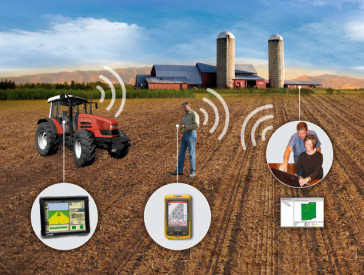FARMING NOTES – NOVEMBER 2016
We seem to be going through a period of major change in agriculture. There are certainly plenty of challenges at the moment from depressed commodity prices from milk to corn, soybeans, wheat and cotton. These stresses have triggered consolidation in the global seeds/crop protection, fertilizer particularly potash and major activity here in the US amongst the companies and coops involved in distribution, marketing and servicing farmers.
Our industry continues to evolve. It is likely there are more people involved in industries serving agriculture than actual farmers, certainly full time farmers – 2.1 million in 2012. In the 2012 census there were 4.3% less farms compared to 2007. “For 1.5 million farm households, less than 25 percent of household income came from their farm. In 2012, 61 percent worked off the farm at least some days, and 40 percent worked off the farm for 200 or more days.”Ag Census 2012.
A disturbing statistic is the average age of 58.3 in 2012 up from 50.5 in 1982.
It must be an increasing imperative for federal, state and local government to facilitate the transfer of farms to the next generation within or outside family.
In the US today farmers represent just 2% of the total population from 3% in 1994 and the number of farmers continued to decline in most countries in recent years – France 5% in 1994 down to 3%, UK 2% to 1%, Germany 3% to 2%. Even India has decreased from 61% to 51%.
The amount of farmland has gone down in the US from 922 to 915 million acres and this trend is evident in most other countries. We can also expect climate change and further increases in global population to further decrease the land available for food production. How to continue producing more from less land?
Meanwhile the general population has increased significantly and yet the global undernourishment rate was estimated to be 50% in 1945 (FAO) and is now around 11%. So farmers are doing something right to be able to feed many more people better. In the US the farmer only receives 16 cents out of every dollar spent on food at home and away from home – it was 31 cents in 1980.
This could not have been achieved without an increasingly large and sophisticated infrastructure consisting of a wide range of products and services.
So back to an old theme. Science and technology combined with enlightened government policy have been able to increase yields often dramatically. How could we have managed without mechanization, better genetics and nutrition in crops and livestock and a sophisticated infrastructure that markets fresh and processed products cheaply within the country and to foreign markets all round the world? One in three US farm acres is planted for export. 32% of raw US farm products are exported each year. Our Ag exports were valued at $133 billion in 2015 and in fact 31% of gross US farm income comes directly from exports. (US Farm Bureau). So we are meeting domestic needs and relying increasingly on exports.
What are the developments that will contribute most to the continued increase in production and ensure a higher level of sustainability to enable the world’s increasing population to be fed and clothed adequately and sustainably? We know that the input supply industries are forecast to continue their growth from the current estimated global dollar value examples being fertilizers (globally $170-200 billion in 2015), seeds ($45-50 billion), crop protection chemicals ($55 billion) and farm equipment ($145 billion). Mechanization has allowed the increased size and scale of farming operations particularly for the most expensive operation of harvesting. This is likely to continue even to include the many vegetables and particularly fruit crops. We recognize that mechanization, computers, globalization and scale are affecting us in agriculture as they have been affecting all other major industries. John Deere already has 200,000 self-driving tractors in the field. GPS is a standard fitting on combines and tractors and major international companies have been investing heavily in data and software companies to collect, analyze and pull together lots of data points to manage farm operations. Drones can monitor crop development and health so that sprays can be applied in a more timely fashion without costly field monitoring. At present there seems to be problems in the compatibility between programs so that you need to be a computer whiz but these challenges will get resolved. Data and software programs will not only allow better decision making but provide detailed records for planning purposes and to meet government and marketing needs. We can expect much more development in this whole area so that our farmers can make even better decisions and flourish. DAA 11/25/2016

